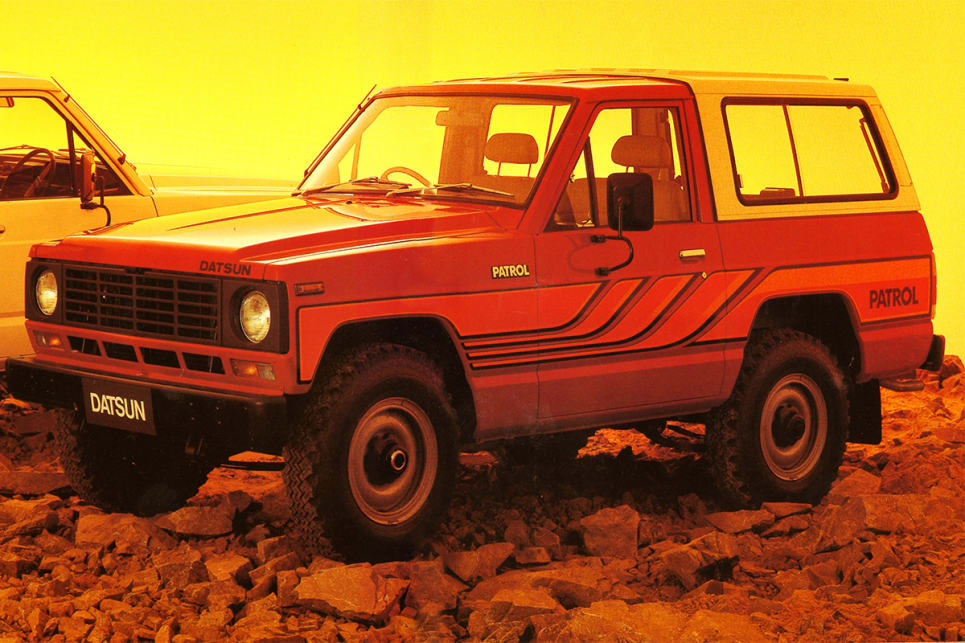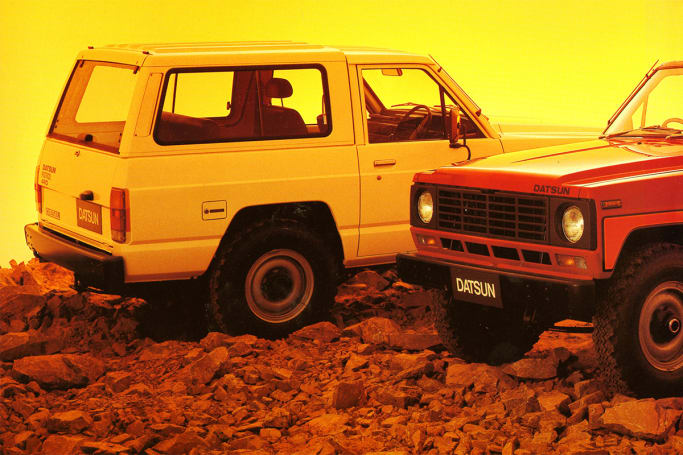
Volkswagen Crafter 2024 review: Kampervan
The VW Kombi and camping have gone together like a horse and carriage for more...
Browse over 9,000 car reviews

The MQ Patrol was a real watershed model for Nissan (or Datsun as it was still known here). It singlehandedly dragged the Patrol station-wagon concept from a military-styled, tool of the trade into a brave new world where families would increasingly use vehicles like it not just for everyday transport, but also as a bona fide recreational lifestyle accessory.
Until the 1970s, four-wheel-drives had been all about the mining industry, farming and specialised industries that needed the go-anywhere abilities of a four-wheel-drive in a compact package. The Land Rover was a good example, as was the Toyota LandCruiser 40 Series, both of which bundled up the required dynamic abilities into a sparse, bare-bones vehicle with styling heavily based on the wartime vehicles that inspired them. And the G60 Nissan Patrol was absolutely no different. But within the established market for such products, there was a new breed of consumer; one with the idea of getting away into the bush for the weekend, just for fun. And the notion was starting to really gain some traction (no pun intended).
While manufacturers were keen to tap into this new type of buyer, the vehicles themselves didn’t really reflect it. They were still largely short-wheelbase designs, often with a canvas soft-top, and there was very little in the way of creature comforts. Of course, it wasn’t too long before somebody started building a four-wheel-drive with a decent interior, some inbuilt luxury and a sense of style that didn’t shout M.A.S.H. That somebody was Nissan and the vehicle was the MQ Patrol which arrived here in 1980. And the game had changed forever.
For a start, the MQ Patrol applied some modern styling to the idea of an off-roader. Gone were the separate front mudguards, super-upright windscreen and cross-eyed headlights of so many of the Nissan’s competitors. And in was an integrated wagon look that managed to be both butch and modern at the same time. Inside, as well as padding for all seven seats, the dashboard of the MQ Patrol was a moulded plastic unit with some real shape and depth, as opposed to the steel plank with a token strip of rubber padding that was the norm for vehicles like these. And heck, within a year of the launch, you could even have your Patrol with an automatic transmission. Was there no end to the luxury on offer here?
That said, there was still a lot of old-school just beneath the MQ’s surface, including the separate ladder-chassis and body construction and the leaf springs at all four corners. Disc front brakes were a break from the past, though.
The MQ was initially offered in five body styles; a long and short-wheelbase version of the hardtop, a cab-chassis, pick-up and the long-wheelbase wagon which was the model most in touch with the new type of four-wheel-drive buyer, and the one that most appealed to family fun in the great outdoors.
When it launched in 1980, the Patrol was available with three different engines, two petrols and a diesel. The biggest petrol was the old P40, carried over from the G60 Patrol and good for 85kW (or 108kW according to some records). In any case, it was restricted to the commercial versions (cab-chassis and pick-up) while the wagon version of the Patrol got a newer six-cylinder measuring 2.8-litres and making 88kW. In fact, it was a very similar engine to that used in the Datsun 240Z sporty coupe, but with a single carburettor and more torque.
As with previous Patrols, the MQ stuck with a part-time four-wheel-drive system with high and low-range courtesy of the two-speed transfer-case. You could select four-wheel-drive on the move for the first time and the low gear ratios were well up to the task of hopping over logs and barging through rivers.
The big news, though, was the availability of a diesel engine, something that Toyota had offered since 1977 and an engine that was gaining popularity. In the case of the 3.3-litre fitted to the Patrol, power was 70kW but, interestingly, the vehicle used a 24-volt electrical system which was good in one way, but made finding electrical accessories a bit hit and miss.

That changed in 1983 when the patrol got its first facelift to include rectangular headlights but, more importantly, the option of a turbo-diesel engine, something Toyota didn’t have at that point. It was a turbocharged version of the same 3.3 (which was actually a 3.2 litre if you want to split hairs) and while it reverted to 12 volts it also made 81kW and gave Nissan license to slap big `Turbo’ decals all over the vehicle at a point in history when everything from hair-dryers to can-openers was getting the Turbo-branding treatment. The 1983 facelift was also notable for introducing a five-speed manual to all but the most basic commercial versions (the five-speed became standard in 1986).
Given the throw-back mechanical package, it was no surprise that the MQ Patrol drove a lot like the earlier version in terms of its actual dynamics. There was still a fair bit of body roll and while it could carry a load, those leaf springs made the ride very firm. The live axles still gave the impression of the Patrol having lots of unsprung weight and the recirculating-ball steering system, though now power-assisted, was still pretty vague.

But it all worked beautifully off-road and that, back in the 1980s, was still more or less the point of vehicles like the Nissan. The big improvements over what went before, then, included the sleeker looks, better standard equipment and much improved levels of refinement and noise suppression compared with the old G60 Patrols. For the very last year of production before the legendary GQ Patrol hit showrooms, Nissan actually did something about the poor ride quality and, while sticking with the leaf springs, revised their settings to allow for much greater comfort.
But really, the reason we all remember the MQ Patrol so fondly is that it represented the first step towards making a four-wheel-drive a truly viable family car. By ditching the quasi-military styling and the bare bones specification, Nissan moved the concept toward the vehicles we know and love today for their ability to turn the rugged Aussie bush into playground. And when you look at the grey nomads, families and hard-core off-roaders today, you can clearly see that Nissan was truly on to something.
Read more Nissan Patrol advice:
- TD42 engine: Your guide to the Nissan turbo diesel motor
- G60 Patrol: Your guide to the Nissan 4WD
Comments